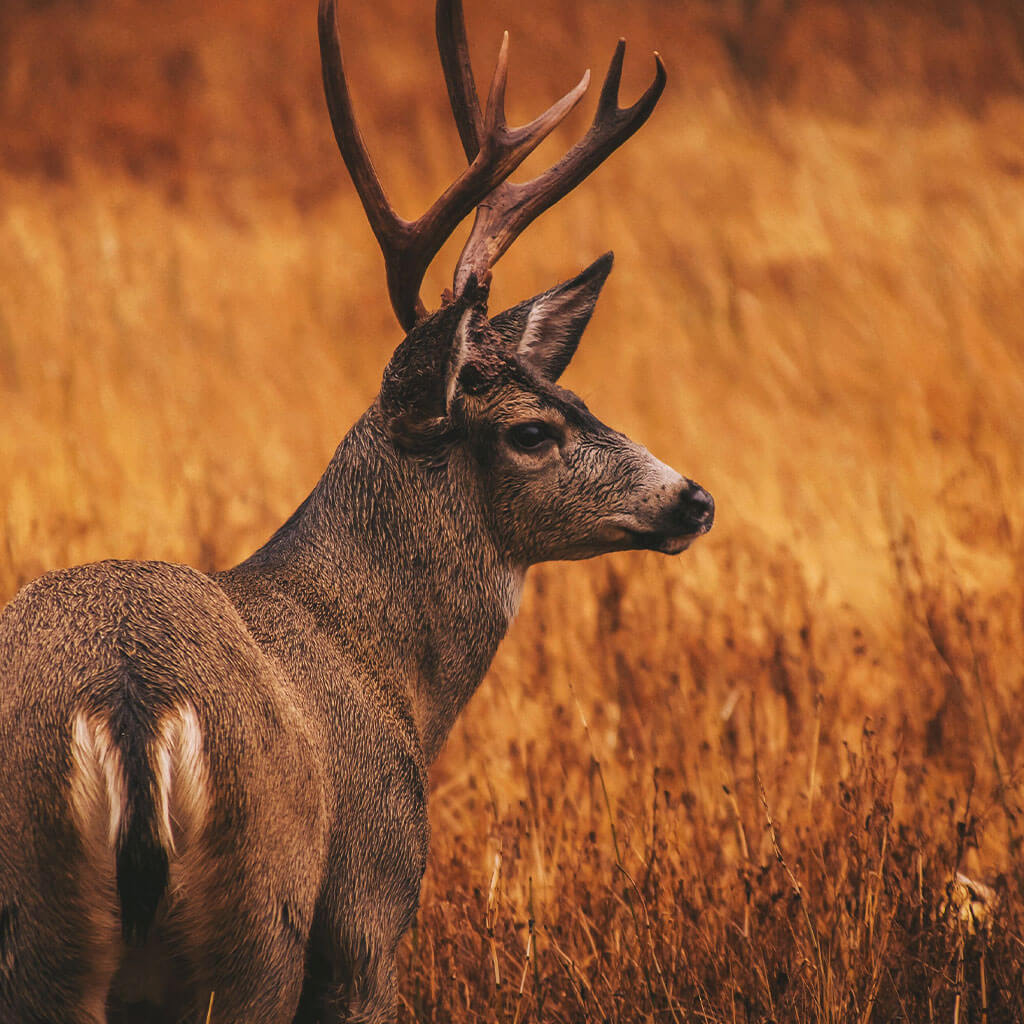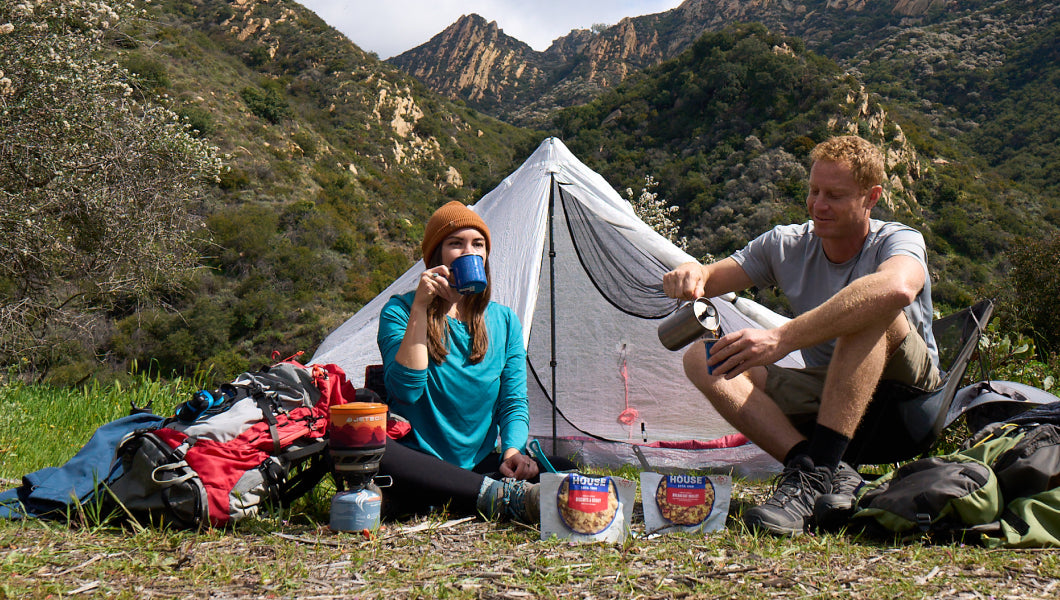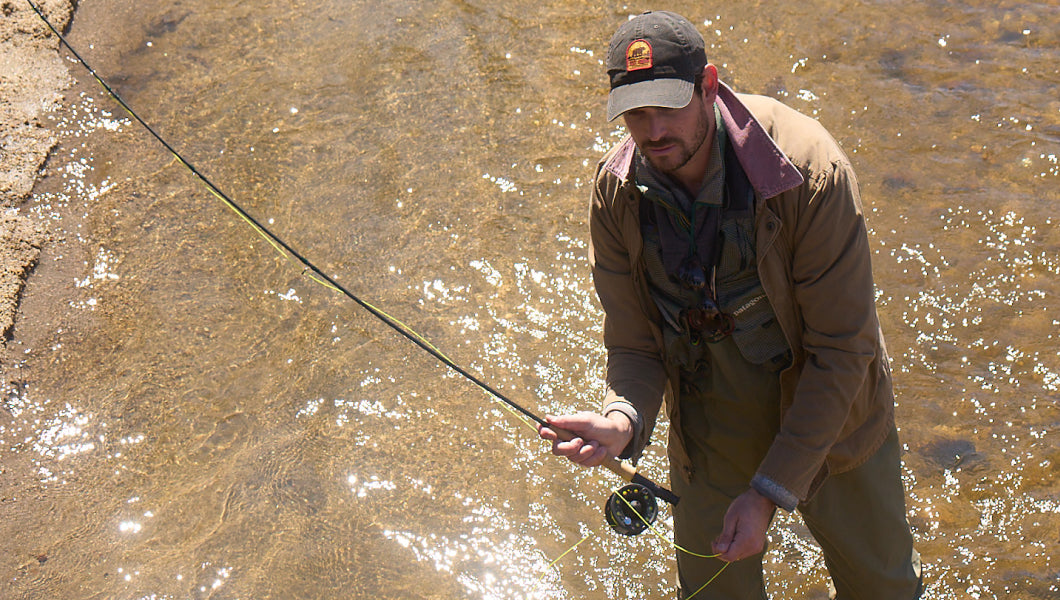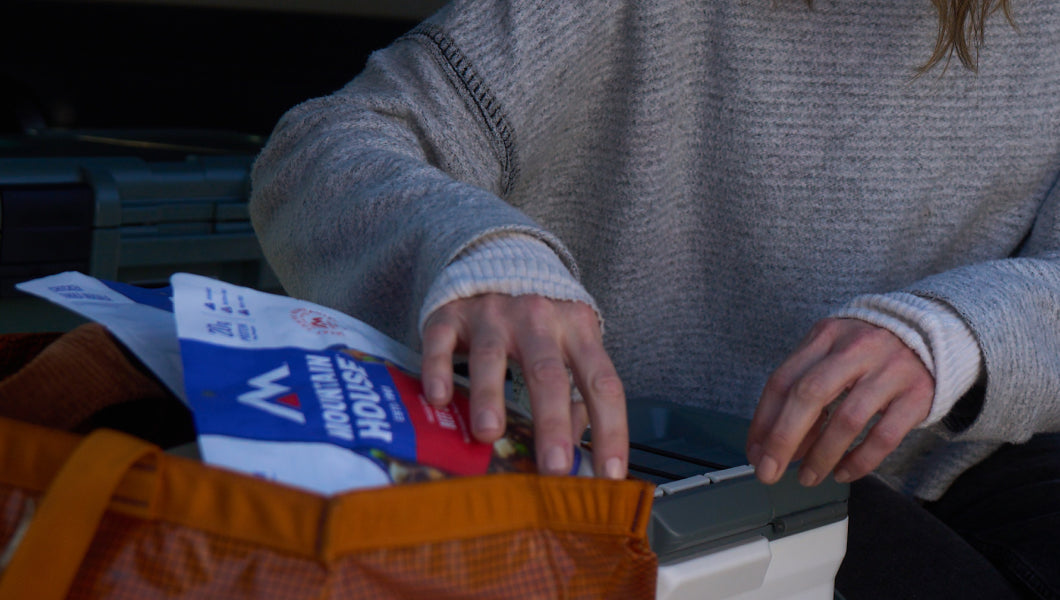Inspired for an Adventure? Check out Beef Stroganoff - Pouch and Beef Stew - Pouch
Free Ground Shipping On All Orders
Over 2,100 Reviews
Add description, images, menus and links to your mega menu
A column with no settings can be used as a spacer
Link to your collections, sales and even external links
Add up to five columns
Add description, images, menus and links to your mega menu
A column with no settings can be used as a spacer
Link to your collections, sales and even external links
Add up to five columns

Deer Hunting for Beginners
Across much of North America, deer rank as the most common big-game animals—and some of the most ecologically significant critters on the landscape. Because of their size, distribution, and (overall) abundance, these fleet, watchful ungulates (hoofed mammals) have been prized quarry for hunters since prehistory.
In the United States, deer hunting is something of a religion for many sportspeople, and meanwhile wildlife managers rely on hunters to help keep the deer population healthy and in check. Obviously many hunters prize a big-antlered trophy buck, but much deer hunting in America remains a subsistence pursuit: linking the hunter of today with countless hunters of yesteryear. After all, venison is its own well-appreciated delicacy at dinner tables all across the country, and deer hunters relish the chance to provide meals for their families (and donate to food pantries, as well) via a few hearty days spent in the woods.
Here are a few very basic tips on how to hunt deer, aimed at complete newbies and designed simply as a blueprint to help get you thinking and inspire your education.
Deer Hunting for Beginners: An Introduction to Your Quarry
Technically North America’s home to five members of the deer family, but the three biggest—elk (wapiti), moose, and caribou—aren’t typically implied when we’re talking “deer.” What we mean by that are the white-tailed deer and the mule deer, both of which have over the years been variously split into many subspecies or lumped into just a few. In terms of hunting, the best-known subspecies would likely be the black-tailed deer, a smallish race of mule deer found along the West Coast from southeastern Alaska to Northern California.
One kind of deer or another inhabits virtually every corner of the Lower 48 States. Mule deer are strictly a western species, found from the Great Plains to the Pacific coast, while whitetails range more widely: Most abundant in the central and eastern U.S., they also inhabit much of the West save for most of the Great Basin and California.
Superficially similar, whitetails and “muleys” are easily distinguished at a glance once you know the basic fieldmarks. Whitetails are named for the fluffy white undersides of their large tails, raised like banners when the deer’s alarmed. (The great naturalist Olaus Murie referred to it as a “flagtail.”) Mule deer, by contrast, have short, skinny, black-tipped tails. They’re named for their outsized ears. A whitetail buck’s antler has a single beam branched with tines; the bifurcated muley antler forks multiple times.
Depending on the deer you’re after, you may be hunting in a wide range of habitats. Whitetails are predominantly forest deer (which certainly spend much of their time foraging in meadows and fields), as are blacktails, inhabitants of Pacific Coast temperate rainforest and oak savannas. Mule deer tend to favor more open country such as prairie, sagebrush steppe, chaparral, and high-country parkland while also readily inhabiting pine woodlands and montane conifer forest.
Where white-tailed and mule deer overlap—parts of the Great Plains, Rocky Mountains, and Intermountain West, for example—you’ll typically find the whitetails in brushy ravines and riparian woods and muleys out on wide-open grassland or shrubland.
And if you've flushed both varieties of deer to flight, you'll see another clear difference. Whitetails run, often low to the ground—a handy form of high-speed locomotion in heavily timbered or brushy landscapes. Mule deer, by contrast, "stot": a sort of pogo-stick maneuver that has them bouncing along stiff-legged with all four hooves hitting the ground at about the same time. Here again, that reflects the deer's chosen habitat: Stotting is a good way to maneuver broken topography.
Deer Hunting Regulations
The agencies in charge of managing state deer herds establish hunting regulations based on the best available science with regard to population dynamics. This involves considering both the biological carrying capacity—how many deer a particular tract of land can support—and the social carrying capacity, which basically refers to the maximum number of deer people will tolerate (in the face of crop or garden damage, deer-vehicle collisions, and other human-perceived negatives).
Managers set quotas for how many deer of what class can be taken during which seasons and in which deer-management units. It’s about balancing the number of deer tags issued with the pressure on the herd from other mortality factors: from wild predators (wolves, pumas, coyotes, etc.) to disease and winterkill.
Typically deer seasons run from early autumn into early winter, which generally corresponds with the lead-up, peak, and wind-down of the rut.
(Here’s a toast to those state wildlife agencies faced with the often-thankless task of looking after the health of deer and their range while keeping hunters happy—or at least satisfied—with their opportunities.)
Deer Hunting 101: Your Weapon
Modern deer hunters employ a variety of weapons in their pursuit: rifles, shotguns, muzzleloaders, and bows (both traditional and compound). Because of the fundamental differences in use and performance, there are typically distinct seasons for particular weapons: e.g., archery vs. muzzleloader vs. centerfire seasons.
Many sportspeople enjoy using different tools to go after deer: hunting with both bow and rifle, for example. A muzzleloader offers a different challenge than a rifle, as does a traditional bow (which requires getting much closer to a deer for an efficient killing shot), and prowess in each is its own art.
As a beginner, you’re likely going to want to start with a rifle: the most accommodating weapon for a novice learning how to hunt deer.
Whatever you choose, it’s essential you become proficient with a gun or bow before even thinking about stepping out into the deer woods. Learning how to hunt deer means, first of all, learning the ins-and-outs of your weapon. Attempting to kill an animal with a tool you don’t fully understand and lack familiarity with is irresponsible and disrespectful, increasing the odds as it does of striking but not killing a deer and causing undue suffering. Hone your accuracy at greater and greater ranges, but don’t overreach your abilities or the abilities of the firearm or bow in the field: Be conservative and wait until you know a deer’s close enough to have a decent chance of a killing shot before firing.
What is a killing shot? When it comes to maximizing your chances of landing a deer while minimizing its pain and suffering, your best option is usually a bullet or arrow into the heart or lungs of the animal, which in an ideal broadside position means aiming for just behind the shoulder.
Hunter Safety Courses & Apprentice Programs
Taking a hunter safety course is typically a prerequisite for getting a hunting license. The requirements vary from state to state, so learn what you need to do from the agency overseeing deer-hunting in the area you intend to hunt.
If you’re curious about deer-hunting but yet ready to go full-bore and enroll in a certified safety course, you can often test the waters via an apprentice-hunter program, which pairs you with a supervising licensed hunter for the experience. For some basic safety hunting tips, check out our "Hunting Season Safety" article.
Deer Hunting 101: Techniques
Any hunter’s success depends on how well he or she understands the quarry. A good hunter knows as much about deer habits as a biologist. With its razor-sharp senses (especially hearing and smell) and intimate knowledge of its territory, a deer has a whole slew of advantages over a human being. Blind luck (definitely a thing in the realm of hunting) aside, you’re going to want to familiarize yourself as much as possible with the basics of deer ecology in your hunting ground if you want to have any chance of bringing home some venison.
Finding deer means recognizing deer food sources and shelter. Staking out where deer feed or where they navigate between foraging grounds and hideaways is the M.O. of a hunter. Pre-season scouting in the country you’ll be hunting will boost your chances when it counts.
You’ll need to learn how to I.D. deer sign in the field, a skill that takes much on-the-ground practice to refine. Look for deer scat, which can vary depending on the animal’s current diet from a heapful of hard pellets to heavier, gloppier chunks. Their droppings obviously give an indication of what deer are eating—key information for hunters hoping to target their efforts. So can direct evidence of browsing: Deer, which lack upper incisors and tear off leaves or twigs between lower teeth and palate, leaving a ragged edge behind that contrasts with the cleaner cut of (say) a rabbit.
Depending on the area, in fall whitetails might be gorging on oak or beech mast in the woods, feasting on corn and soybeans in cropfields, or savoring fallen fruit in an old orchard. You may find mule deer in western rangelands nibbling bitterbrush and mountain-mahogany, while West Coast blacktails might be (like their whitetail compadres) cueing up for acorns.
Other sign to keep an eye peeled for include the ground scrapes and bark rubbings of a buck in rut; the flattened-down grasses or forbs where deer have bedded; and, of course, deer trails themselves.
Whitetail hunting in forests and farmland is often a pretty sedentary business: You find a likely spot (say, at the edge of the woods where a deer trail enters a cornfield, or at a deer-trail “crossroads”) and ensconce yourself, either leaning back against a tree trunk or perched in a tree stand, and wait for your prey to mince into view.
By contrast, pursuit of mule deer often means miles of hiking over rough terrain and scouting big reaches from high vantages. As you might imagine, some significant fitness conditioning is called for to pull off such a hunt. The challenge of a whitetail ambush in autumn woods, by comparison, often lies more in the arena of patience (and staying warm) than physical exertion.
Where to Hunt
Deer-hunting takes place on many different kinds of public lands, from state wildlife areas to national forests. Private lands also offer vast opportunities, particularly in the central, southern, and eastern U.S., but naturally it’s essential to get permission to hunt from the landowner. It’s good form (and often part of the agreement) to share any meat you may procure from the countryside with its owner.
Hunter Orange
Among the most important pieces of equipment you need to have on hand during your deer hunt? Blaze-orange outerwear. A bright orange hat and vest keeps you visible to those other deer-stalkers sharing the woods with you: not at all an insignificant safety measure, given how many hunters are accidentally shot every year.
We hope you've found these deer-hunting tips useful, and we wish you a big buck (or doe, depending on what your tag's for) down the line—and, more importantly yet, some quality time soaking up the backcountry with the sharpened senses of a hunter!

How to Clean a Fish Before Cooking Step-by-Step Guide

Best Ice Fishing Lakes in the United States for Anglers


Stay Hungry for Adventure
Sign Up for Delicious Outdoor Meals & Exclusive Offers!


Join the adventure
©2024 Mountain House — All Rights Reserved.
Your Cart is Empty
Continue ShoppingYour Cart
Subtotal
$0.00
EXPRESS PAYMENT METHODS AVAILABLE IN CHECKOUT
Taxes and Shipping Calculated at Checkout














